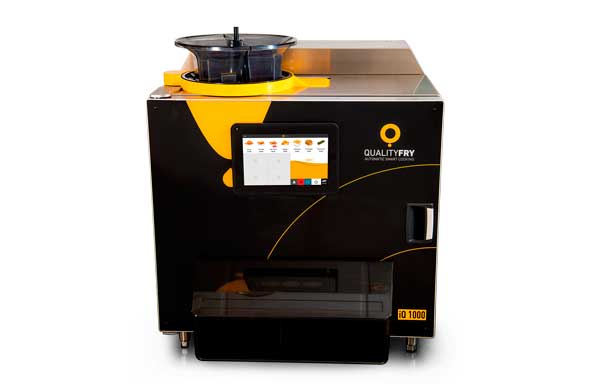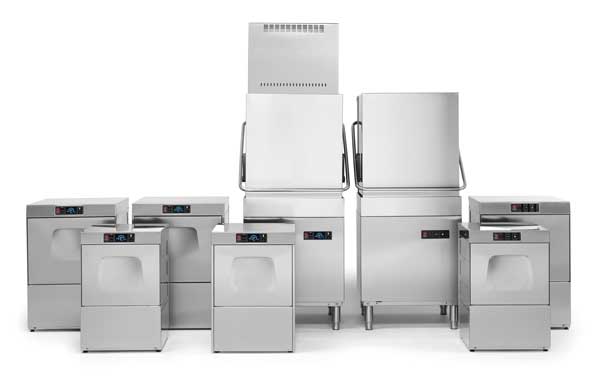The unstoppable rise in electricity prices is making the hospitality sector’s situation, which has already been hit particularly hard by the pandemic, even more precarious, forcing it to control costs to the last cent and having to think very carefully when it comes to purchasing or renewing machinery for its business. As for the equipment manufacturers, they have been working for years to produce more efficient equipment and are making a significant effort in R&D to reduce consumption…

The alarming rise in electricity prices, which Hostelería de España estimates to be between 30%-40%, is creating a further burden to a particularly hard-hit hospitality sector, which has to face inexorably rising energy costs and depends on machinery connected 24 hours a day, 365 days a year.
The Chairman of the hospitality board’s association, José Luis Yzuel, recently warned in a digital meeting of the ‘perfect storm’ that is occurring with not only the rise in electricity prices, but also in the price of raw materials, and which could end up being passed on to the end consumer. “The increase in electricity prices has a major impact on the bottom line for those in the hospitality sector. Talking about raising prices now is not very likely, but in the medium term we will have no choice but to increase them,” he pointed out. “We need to have a profitable sector, and in the medium term it will without a doubt affect our pricing.”
The hospitality sector is also helpless in the face of rising electricity prices, with electricity bills more than doubling. Jorge Marichal, Chairman of the Spanish Federation of Hotels and Tourist Accommodation (CEHAT in its Spanish initials), points out that this “makes it unviable to create jobs, pay suppliers or repay financial commitments, due to the impossibility of passing on this brutal increase in costs to the price.” On top of all this, there is a lack of foreign tourists… This is why they are calling for special discounts on electricity prices “with immediate effect.”
In these circumstances, catering equipment manufacturers are faced with the challenge of developing increasingly more efficient machinery; a goal that is not exactly new to them. “Achieving energy savings is a cross-cutting objective for all machinery used in the hospitality sector”, explains Rafael Olmos, Chairman of the Spanish Federation of Associations for Manufacturers of Machinery for the Hospitality, Collectivities and Related Industries (FELAC in its Spanish initials). “Spanish manufacturers are already developing equipment that consumes less energy thanks to the great effort made in R&D&I.”
Rising electricity prices make energy efficiency an increasingly important factor in the purchase of machinery for the hospitality industry. “The main benefit for the user is the saving on the electricity bill, but it should be borne in mind that the investment made in more energy-efficient machinery is amortised in energy consumed in a short time”, Olmos points out. Now, with European aid in the pipeline, we are in a situation which is conducive to making further progress on the objectives of producing “greener” equipment, but to do this “it is necessary to mobilise aid from European funds for our sector, to promote the modernisation of the hotel and catering industry”, says Olmos. “And we think it is an appropriate time to activate a Renewal Plan to promote the purchase of the latest technology in hotel and catering equipment and machinery, and which is also more energy efficient.”
More efficient equipment: some examples
The ultimate exponent of “green technology” is in the commercial refrigeration sector, in which the energy efficiency label is already mandatory for various types of equipment, but what about kitchen appliances?
Does the hospitality business now place particular value on energy efficiency when purchasing equipment? “There is no doubt that concern for energy efficiency and improving sustainability is becoming increasingly more important”, says Javier Toral, the CEO of QualityFry, a pioneer in the manufacturing of compact fryers that don’t produce any fumes or odours. “This has always been our priority: to offer the industry equipment aimed at professionals who are seeking to make savings on both their energy and operational costs. Our machines do this by achieving a 24% reduction in electricity consumption, a 27% reduction in frying time and a 37% reduction in oil consumption. The latest launch, the iQ 1000 Carrousel professional fryer, is characterised for its greater production capacity, and energy efficiency is another of its key points: precisely due to its low consumption, it is especially designed for food handling areas, kitchens and bakeries that don’t have fume extraction.

A particularly innovative device (also in terms of energy efficiency) is the iVario from Rational, a development of the already successful VarioCookingCenter. At first glance it looks like a designer tilting fryer, but it’s much more: it can cook, sear, fry and steam, all in the same appliance. It is a perfect replacement for conventional cooking equipment, and it is noteworthy for its high productivity, flexibility and simplicity.
This new multifunctional cooking system, which operates with contact heat, stands out for its smart functions and the fact that it consumes 40% less energy than conventional tilting fryers and cooking pots, which it replaces with ease and thus also saves space in the kitchen. “The iVarioBoost is four times faster than conventional cooking technology and its smart energy management results in significant energy savings”, explains Roser Gestí, Marketing Manager at Rational Ibérica. “This is something that is particularly appreciated by our hotel and catering customers, who are increasingly demanding in this regard and who don’t hesitate to ask for all the certifications to prove it.”

As for Welbilt, it has taken the market by storm with the launch of Convotherm maxx, a combi oven with the right performance, advanced technology and an optimum price/quality ratio, which is now joined by the new Convotherm maxx pro: both of which stand out for their energy efficiency. Its robust triple-glazed door minimises heat loss, consumes less energy, raises the safety level and is also very easy to clean. And that’s not all: together with the patented Natural Smart Climate function, it achieves energy savings of up to 10%. “Customers are becoming increasingly aware of sustainability, and the current supply cost situation has led to a higher demand for energy-efficient equipment, as many businesses’ electricity bills have multiplied”, says Laia Umbert, West Europe & Africa Marketing Manager at Welbilt. “Those who pay less for equipment now will pay more over time if there is no energy consumption reductions and energy efficiency in the equipment.”

Lower consumption is also one of the keys to the development of the new AX-UX dishwasher lines recently presented by Sammic, which offer an advanced user experience: washing efficiency, resource efficiency, hygiene and ergonomics as well as providing maximum reliability. “Energy efficiency is materialised in physical characteristics that translate directly into savings in the consumption of resources: water, chemicals and electricity”, explains Amaia Altuna, Head of Marketing. This means that the loaded dishwashers provide ergonomics, robustness and greater washing performance, with a saving of 30% in water consumption. The possibility of working with a double basket doubles the machine’s productivity without increasing energy consumption: a key point. Additionally, the new Hydroblade wash arms achieve higher washing efficiency and lower water consumption: up to 30% less during the rinse. The double-wall construction option offers thermal and acoustic insulation, which also translates into further energy savings.

Even an appliance that is currently in demand, such as a charcoal oven, can be an example of energy efficiency. In the case of Josper, the most internationally known Spanish make of charcoal ovens, its customers have always been concerned about the energy savings of their equipment, “however, the consumption of a box of charcoal to provide an 8-hour service is a 100% convincing argument”, states Montse Garrés, the company’s Marketing Manager.
The most energy efficient oven is the Josper A Class HJA 50 Large model. The A Class range includes efficiency improvements such hydraulic door retention, complete thermal insulation, a larger warming area, greater accessibility, a more compact design and an easy clean system. All of this translates into an exponential increase in the quality and quantity of the oven’s final production and performance, as well as a 50% reduction in coal consumption. Moreover, only charcoal is used to power Josper ovens, and the materials used in their construction (exclusive alloy steels) ensure that they retain an average temperature of between 250 and 300ºC throughout the cooking process by controlling the flow of air/oxygen into the internal cavity.

These pieces of equipment provide just a small appetiser of what will be on show at Hostelco 2022, a real showcase for hospitality innovation, which will be held from 4 to 7 April at Fira Barcelona’s Gran Vía venue.
Marta Renovales, Chief Editor of (Profesionalhoreca.com)


